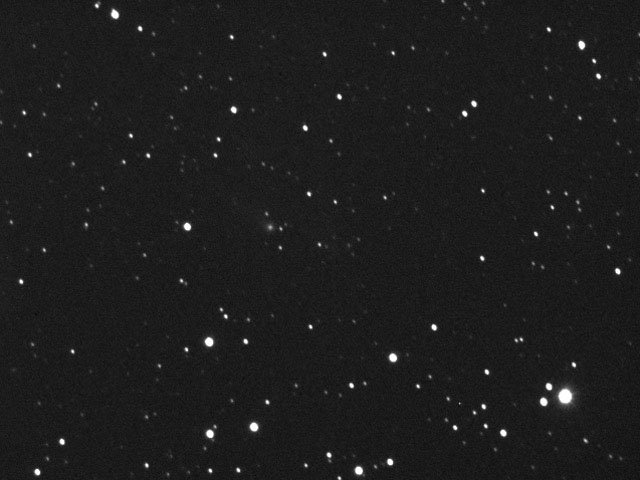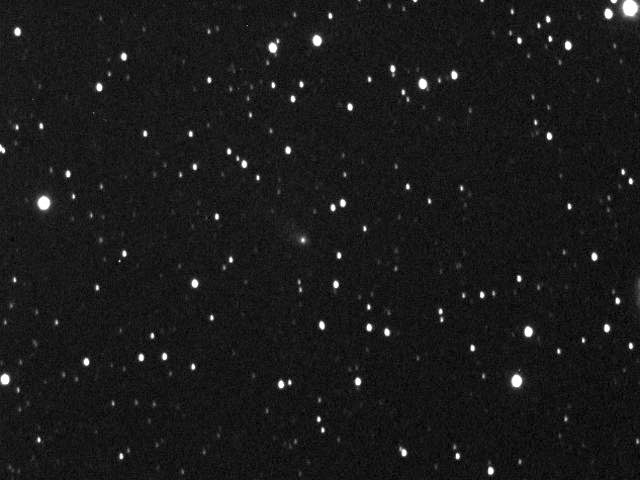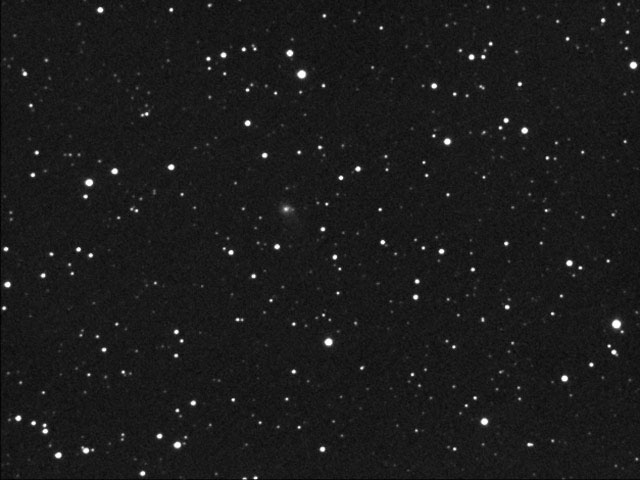Previous Uploads: The NGC891 Galaxy Group Notes CCD Shots during Full Moon Comet Linear July 19 & 25th, 2000 Latest image of Comet Linear S4 Spectacular Red Aurora over Payson Arizona Fuji's New Formulation of it new Super HQ100 FIRST TESTS OF HYPERED FUJI HQ100 First Schmidt shots with PJ400 First Tricolor shots with 2415 Test Images with Fuji NPH400
Photography of extremely faint comets has always been a problem for astrophotographers, especially if they are moving rapidly against the star background. You couldn't guide on the coma or usually invisible nucleus, and exposures long enough to capture comets fainter than 11th magnitude usually blurred the object due to the long exposures and the comet motion. A good 45 minutes or more was usually needed with hypered tech pan and the 12.5" Newtonian to just capture a faint blurry streak. This was so disappointing, that I pretty much gave up hope in ever getting clear images of faint comets with any telescope all together. The new CCD camera, (SBIG 237) with the highest ever quantum efficiency in a detector ever sold by SBIG proved a fine match for capturing these faint solar system objects as seen below. I NEVER thought I'd be able to shoot 13th or 14th magnitude and fainter comets with a six inch, and surprisingly, show tails to boot! Both objects below are Linear Comets, and are the only available comets for now in the evening sky.

This first image, taken on October 15th, was the first shot that demonstrated the power of the CCD in recording faint comets. To shoot this object, I downloaded the latest orbital elements from the IAU site for Megastar, and plotted the comets trail for several evenings. The comet is very near M13, about a degree away in fact. I overestimated the ability of the six inch f/6.3 schmidt Newtonian for seeing the faint 14th mag stars on the chart I made! In fact, I could only see the brightest four stars in this image at the absolute limit of detectability at high power. The position of the comet was a totally blank sky in the eyepiece, and no trace of it could be seen. The CCD was carefully centered on the field by short 10 second exposures, which revealed stars past 14th magnitude. When the first five minute exposure came up on the screen, I was floored to see not only a nebulous comet in the center of the image, but a short tail streaking to the upper left as well. Comet Linear T2 is currently 13.2 magnitude, and is was the faintest comet I've ever photographed at that time. Look carefully at the star images and you'll see them trailed slightly. this is because the 10 minute exposure seen here was guided on the moving comets nucleus, and the stars moved by by the amount the comet would have trailed during the exposure. Stacking two five minute exposures as here with the comets nucleus in register is how this was accomplished.

The next evening, on October 16th, this shot above was taken. Using the same six inch scope, again, two five minute exposures were taken with better darkness because the moon was further below the horizon. The stars are elongated again by the amount the comet would have moved in 10 minutes. Note the sharp stellar nucleus and distinct stubby tail. Mv=13.2

This comet was the next challenge on the 16th as well. With the 75 percent full moon rising in the east, I shot this five minute exposure of this very dim 14th magnitude object near gamma Andromeda. I was only 40 degrees away from the moon, and the sky was totally washed out. The same method was used in finding the comet, a fresh Megastar plot, and carefully centering a very blank star field in the six, in this case NO stars were seen in this field to center it, but a short 10 second exposure revealed all the stars to past 16th magnitude on the plotted chart and then some. This comet also has a short stubby fan tail, pointing downward here. The field of the CCD shots with the six inch are 30 arcmins wide (half a degree) and provide an excellent image scale for identifying the star fields made in Megastar. Both comets were EXACTLY where Megastar plotted them, and I look onward to even fainter comets with the six inch...